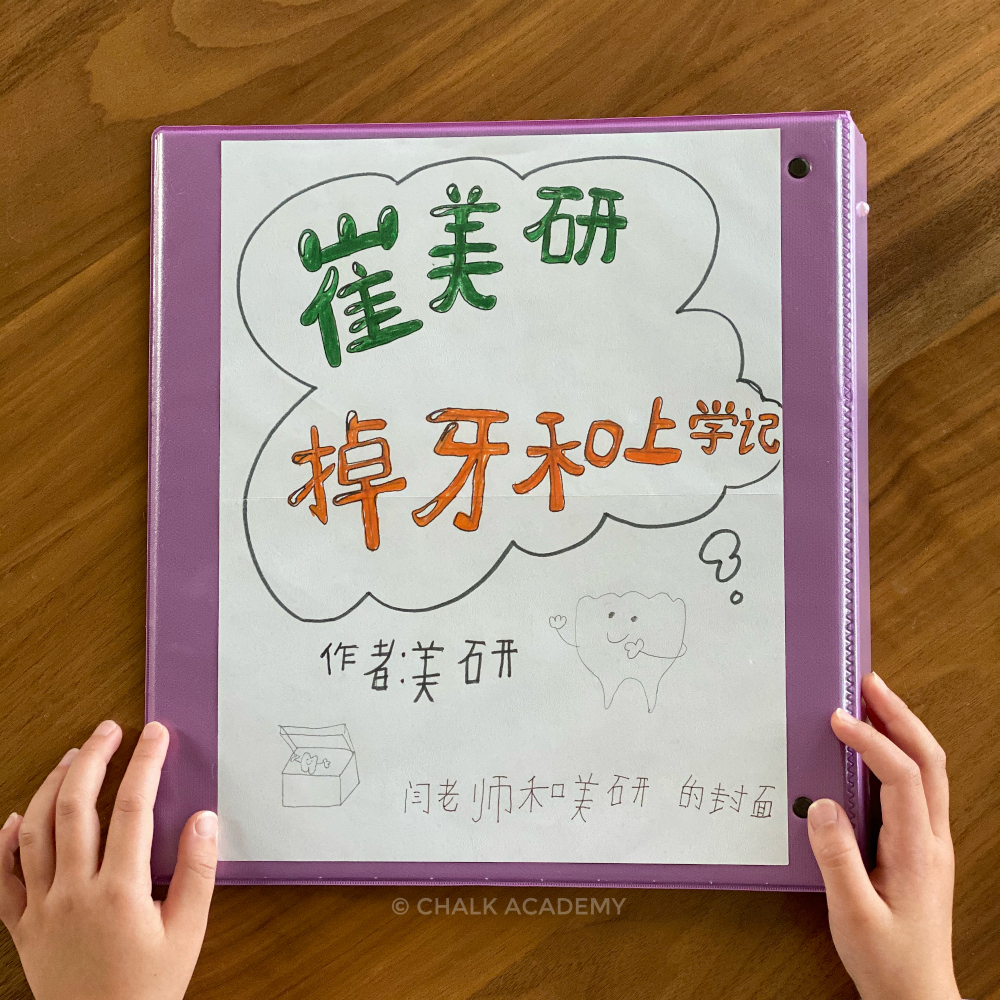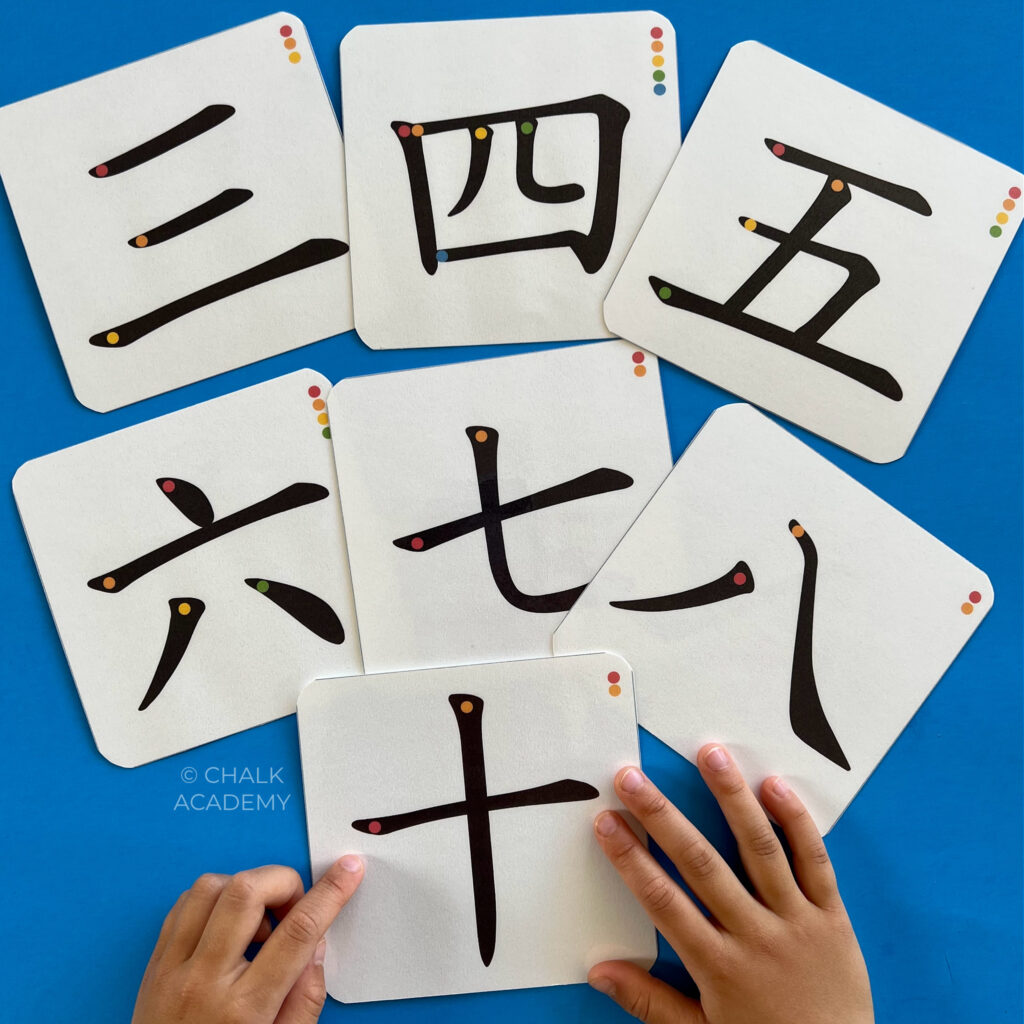Chinese Writing Activities for Kids That Make Learning Fun
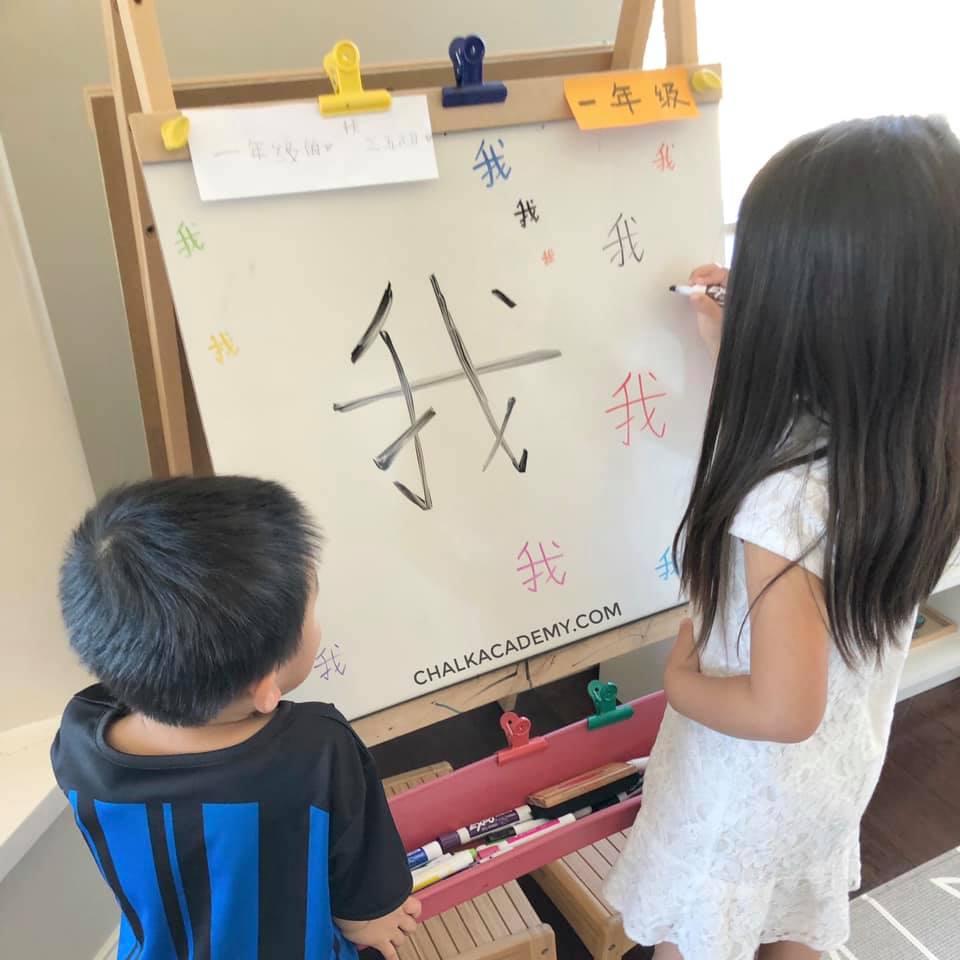
Chinese writing activities can actually make learning fun! Because Chinese characters have so many rules, learning to write is much more complicated than alphabet-based languages.
First, a child is gradually developing fine motor skills. Then, you have to teach Chinese stroke order. Lots of patience is needed because writing skills can take a lifetime to master after listening, speaking, and reading (听说读 / tīng shuō dú).
Chalk Academy is reader-supported. Some of the links are affiliate links. When you buy something through an affiliate link, we may earn a very small commission at no additional cost to you. More details here.
Although Chinese writing worksheets have been the traditional way of memorizing Chinese characters, it doesn’t have to be the only way, especially if you’re trying to spark your child’s motivation.
If you tap into your child’s interests and try different approaches, you can make a world of a difference in their motivation to write!
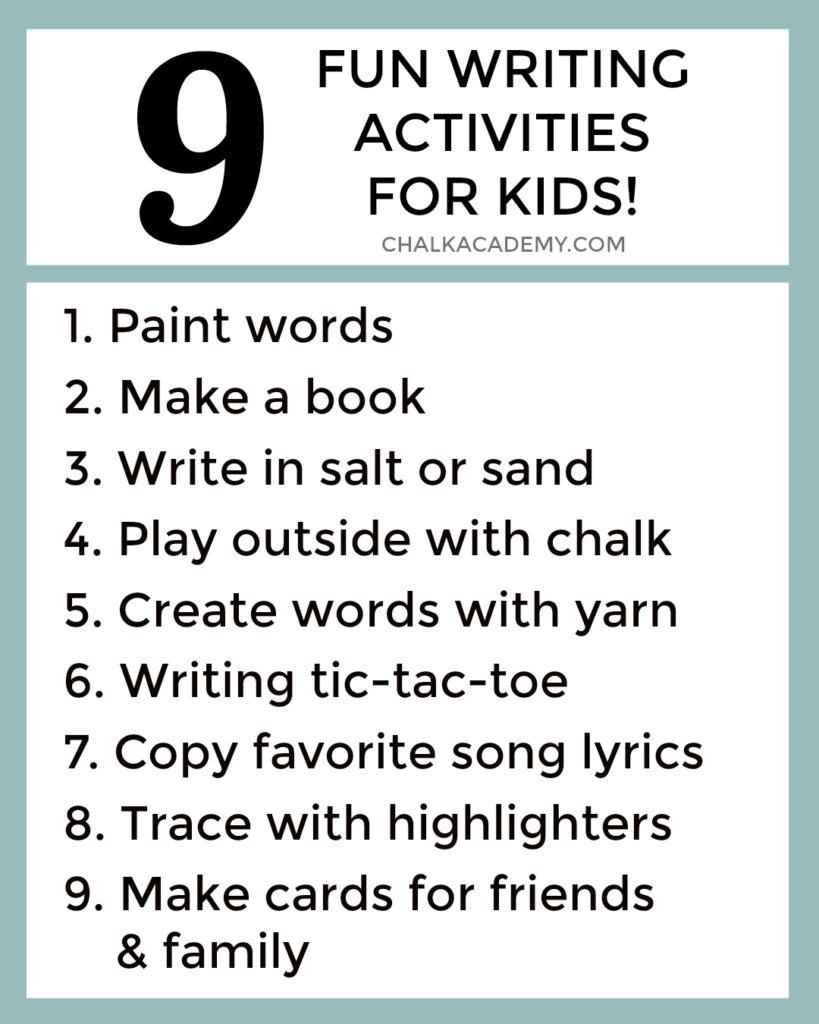
Fun Chinese Writing Activities for Little Kids
Here are simple writing activities for children for younger kids who are just getting started.
Play outside with chalk

Thick chalk is perfect for young hands to practice tracing. Plus, playing outside turns Chinese writing into an extra fun activity.
Highlighter tracing writing practice
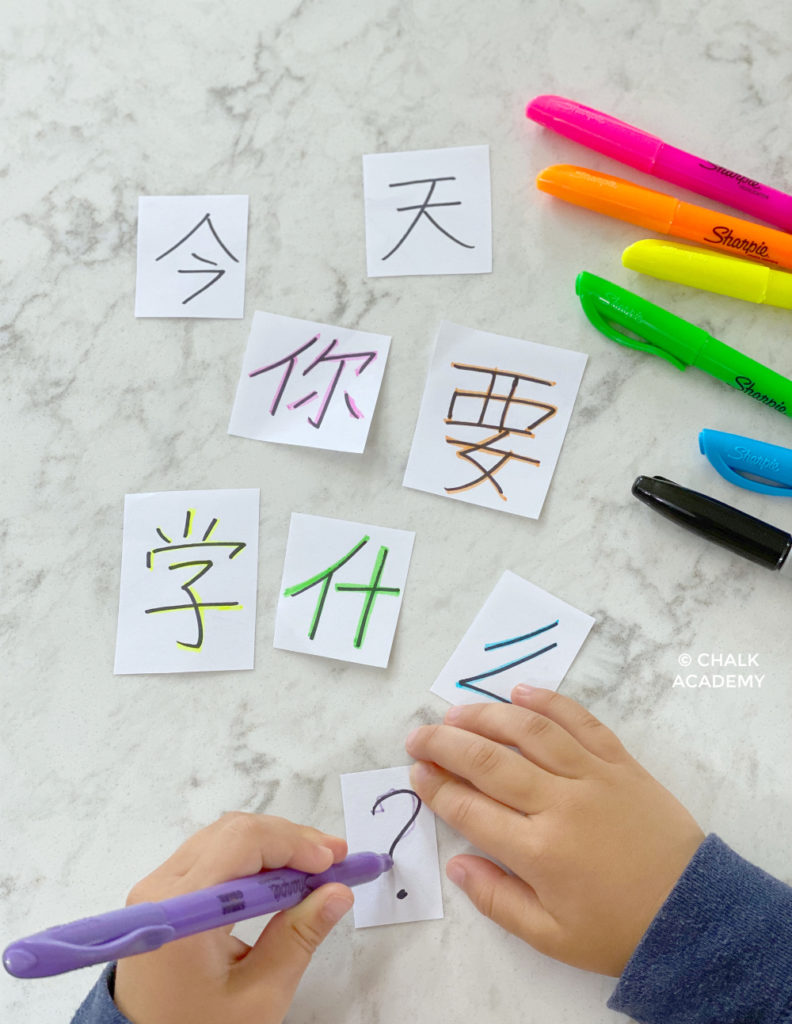
This Chinese writing activity is as simple as it sounds. Write or print Chinese characters with black ink. Then invite your kids to trace over each stroke with their favorite highlighter.
Create Chinese words with yarn
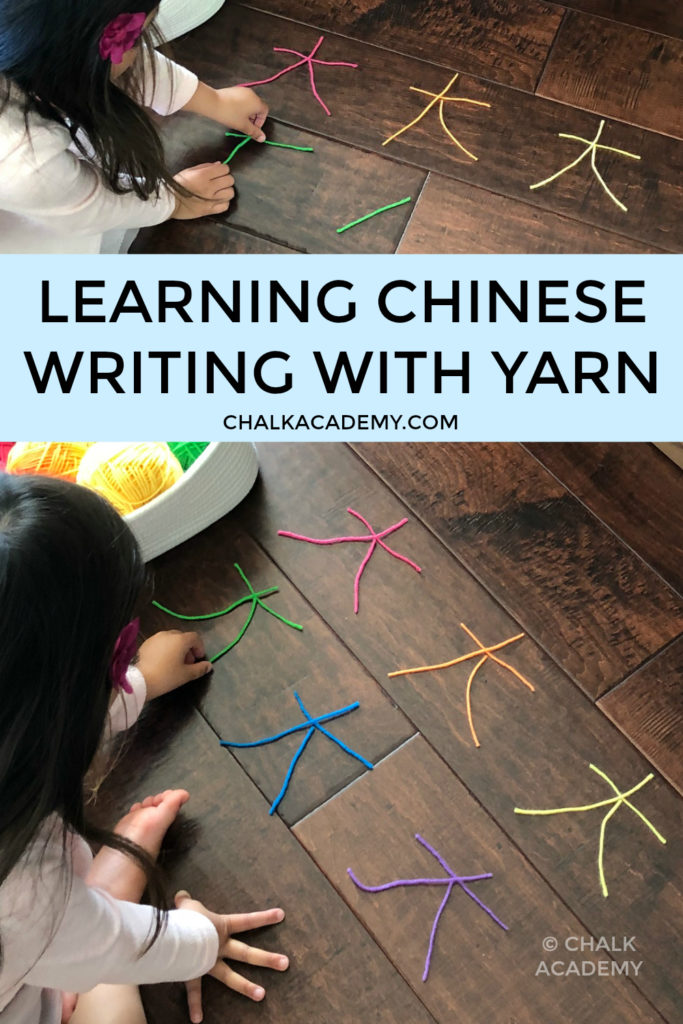
If you have extra yarn or ribbon lying around, it’s an easy way to teach Chinese stroke order. In the above photo, we practiced “writing” 大 (dà / big) in the correct stroke order: 横 (horizontal),撇 (falling leftward),捺 (falling rightward).
Although my daughter did not like this writing activity, it was a huge help for teaching Chinese strokes without worrying about penmanship.
Salt or sand writing tray
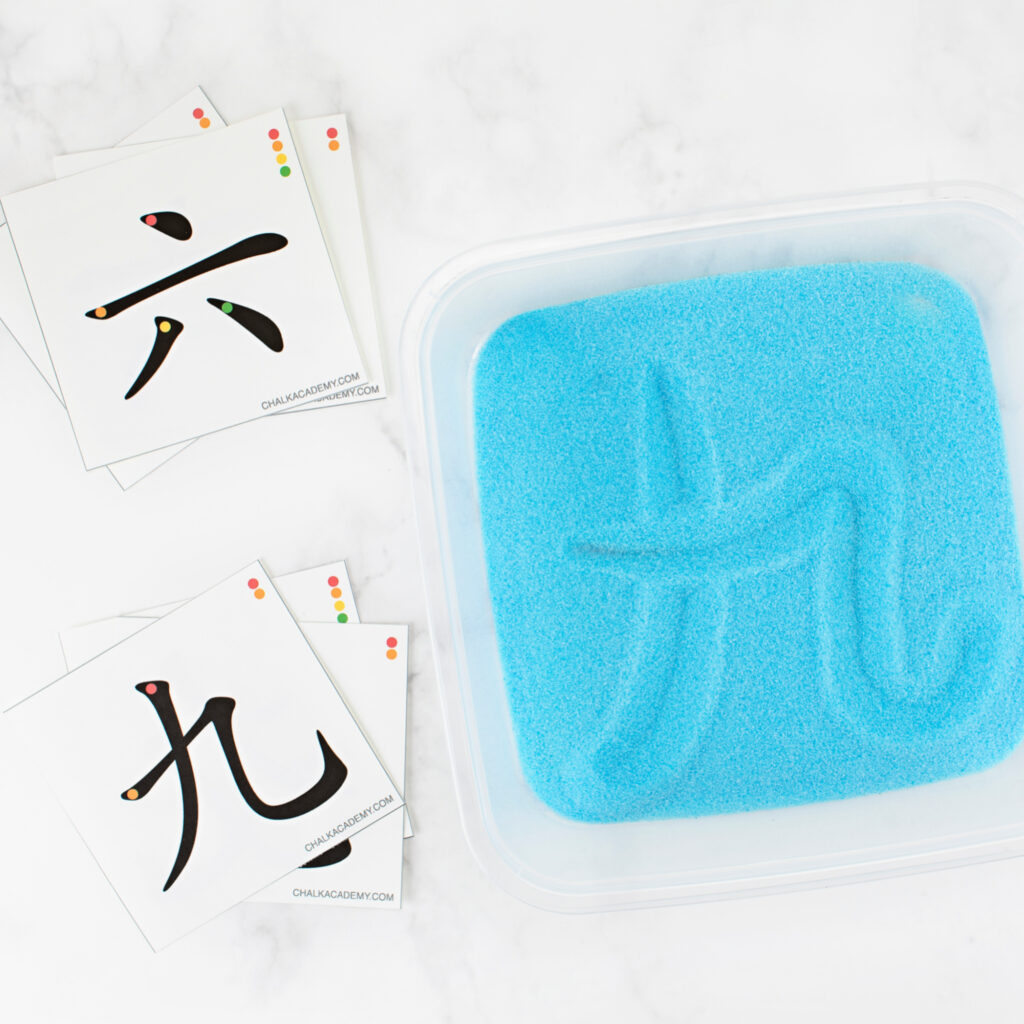
Trace Chinese characters in a tray of salt or sand! It’s as simple as it sounds. Writing in salt or sand can help children memorize how to write Chinese characters.
With each stroke, visual, touch, and auditory receptors are activated. Learn more about Montessori sensory writing trays here.
Chinese writing activities for big kids
These writing ideas are for kids who are ready to form words without tracing.
Paint Chinese words
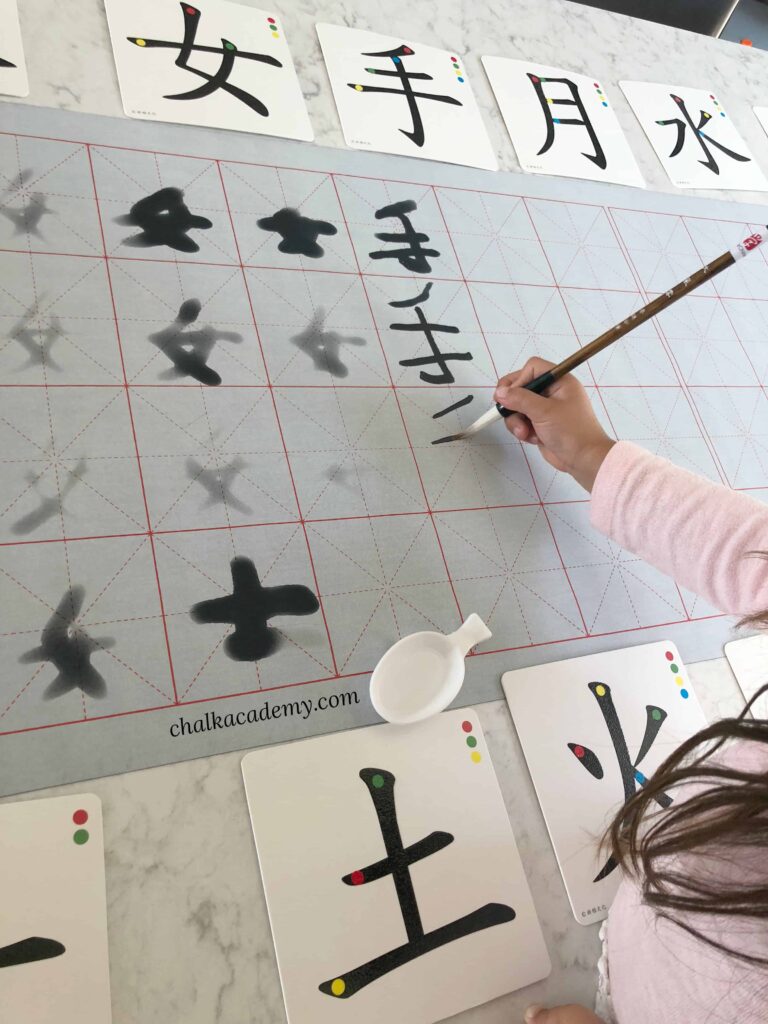
If your child prefers a brush over a pencil, follow her lead! Painting is like calligraphy – the original Chinese writing activity. The Magic Water Writing Cloth is a popular and fun way to practice Chinese characters. Bonus: it also saves paper.
Play Chinese writing tic-tac-toe
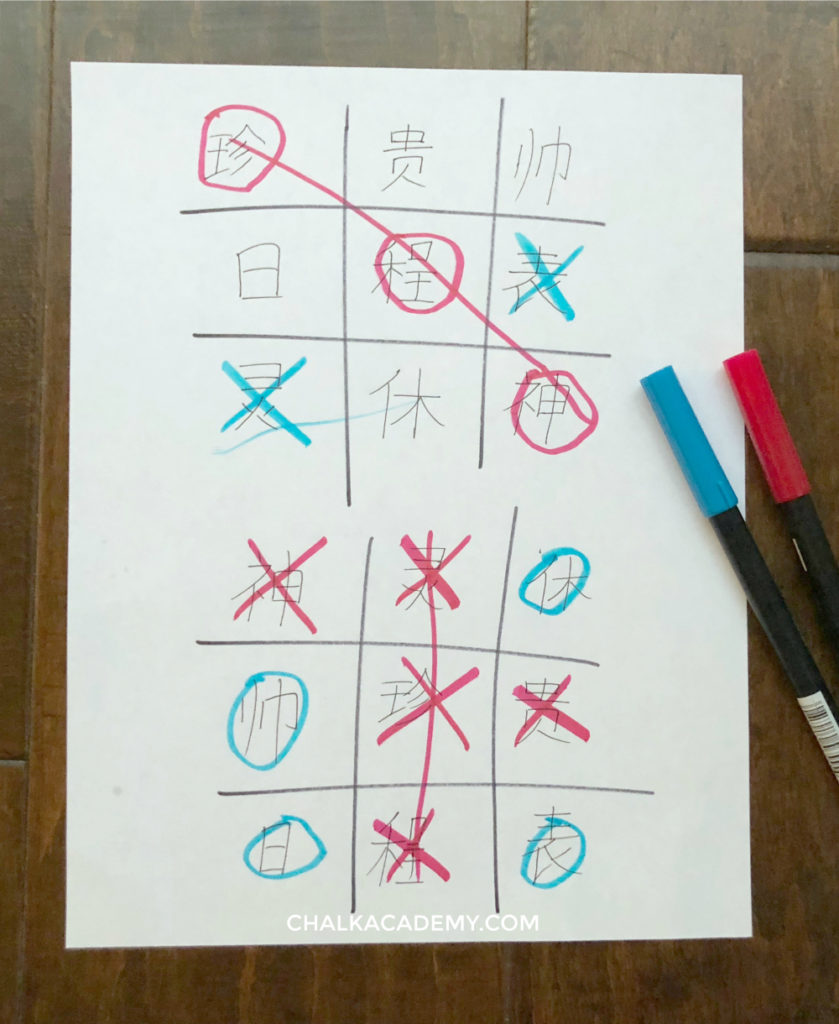
Tic-tac-toe is probably the Chinese writing game that my daughter plays most often! We can easily do this on scrap paper anywhere and also with chalk on our driveway.
Copy favorite Chinese song lyrics
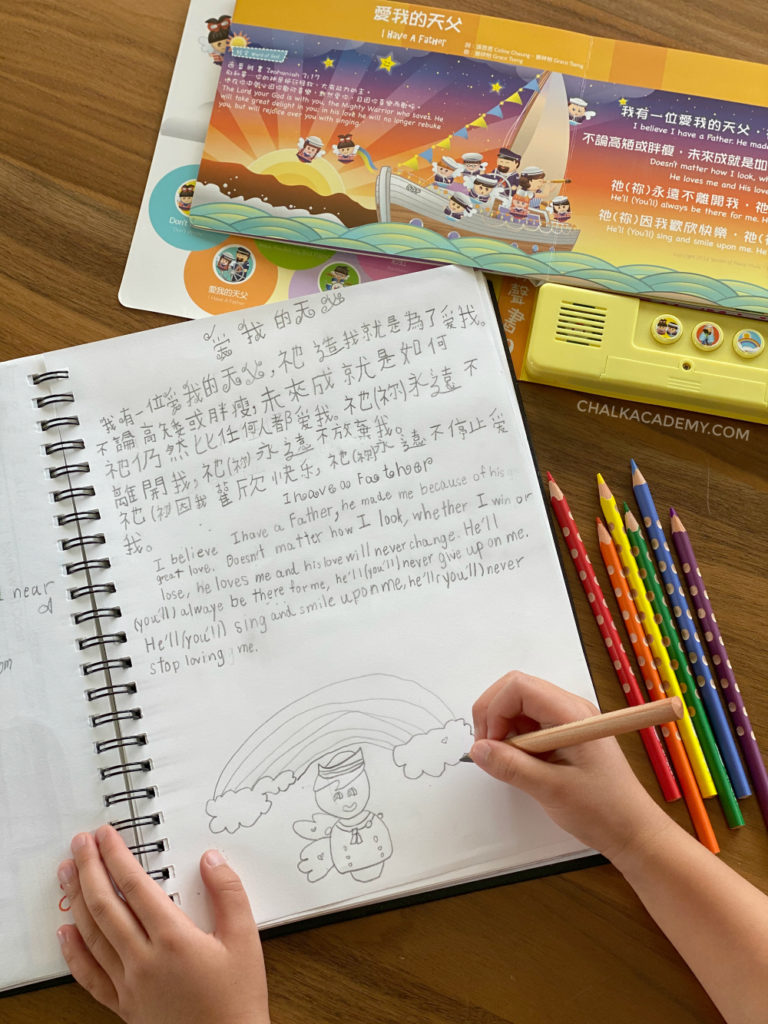
For a relaxing and therapeutic way to write Chinese, invite your child to copy their favorite Chinese song lyrics! Explore the benefits and tips for copywork here.
Make a book!
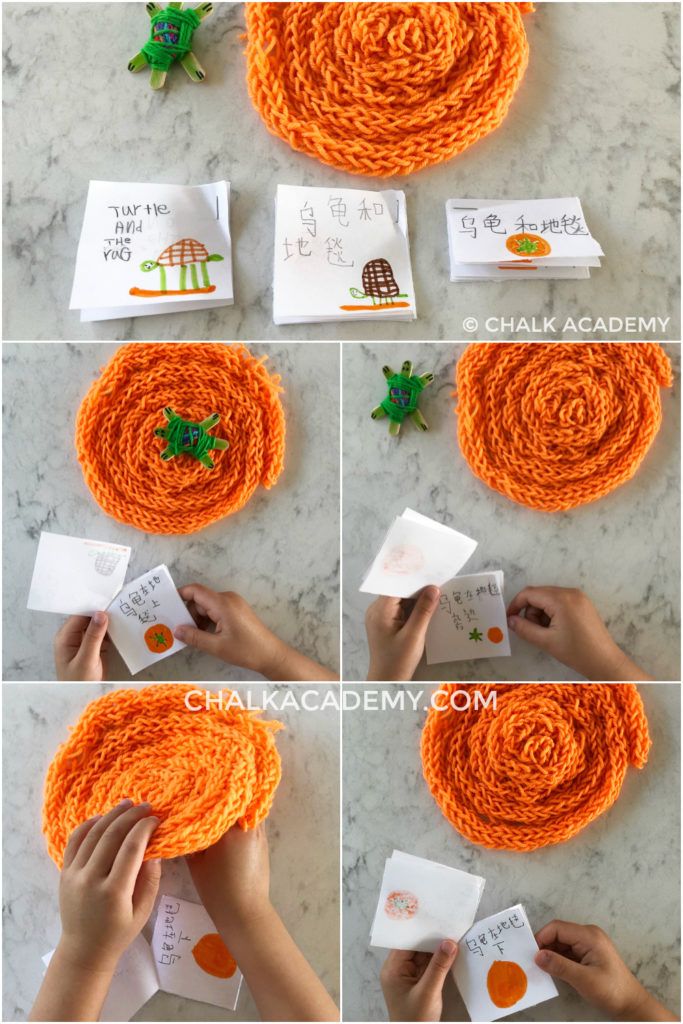
Book-making is one the cutest and most effective Chinese writing activities!
The above photo is an example of mini books that my daughter wrote in Chinese and English. Since we were reviewing grammar, she wrote about a turtle and its position in relation to a rug (additional crafts that she created).
Write a card or letter to friends and family
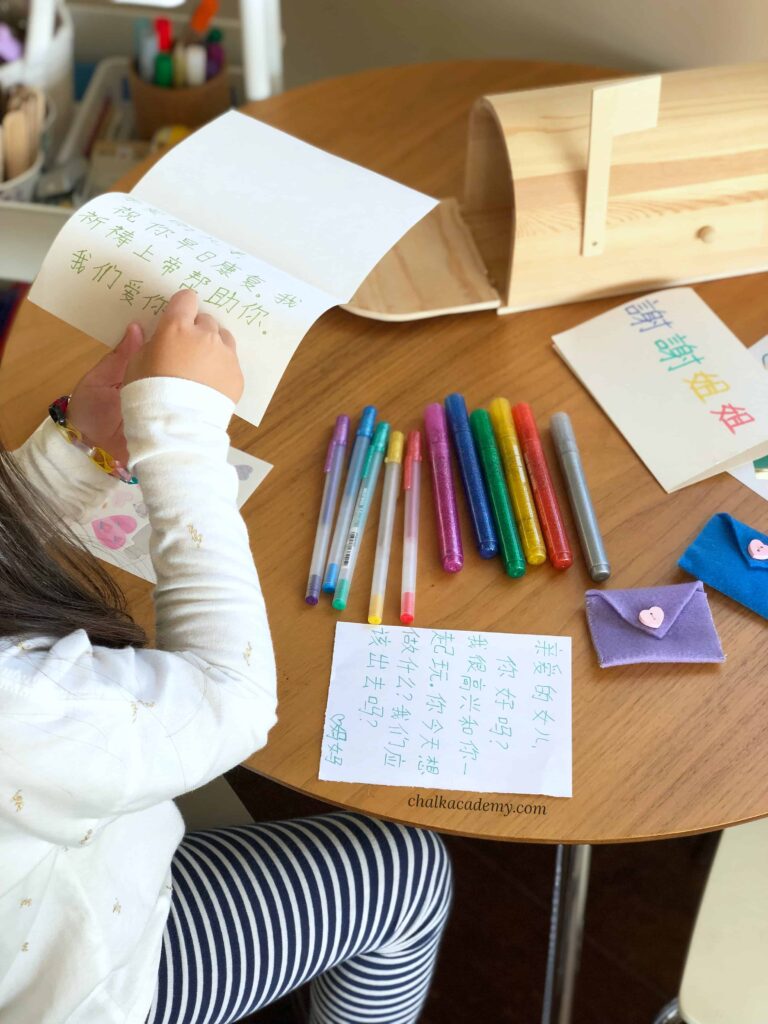
Brainstorm with your children about upcoming birthdays and events and prepare a card for special friends and family!
See Handmade Cards for Reading and Writing Practice (English, Chinese, and Korean) for examples of how you can involve kids of all ages, from toddlers to teenagers!
What are your child’s favorite Chinese writing activities?
Which activity did he or she enjoy most? What other writing activities motivate your kids and students? Please share in the comments! We’d love to hear about your experience.
